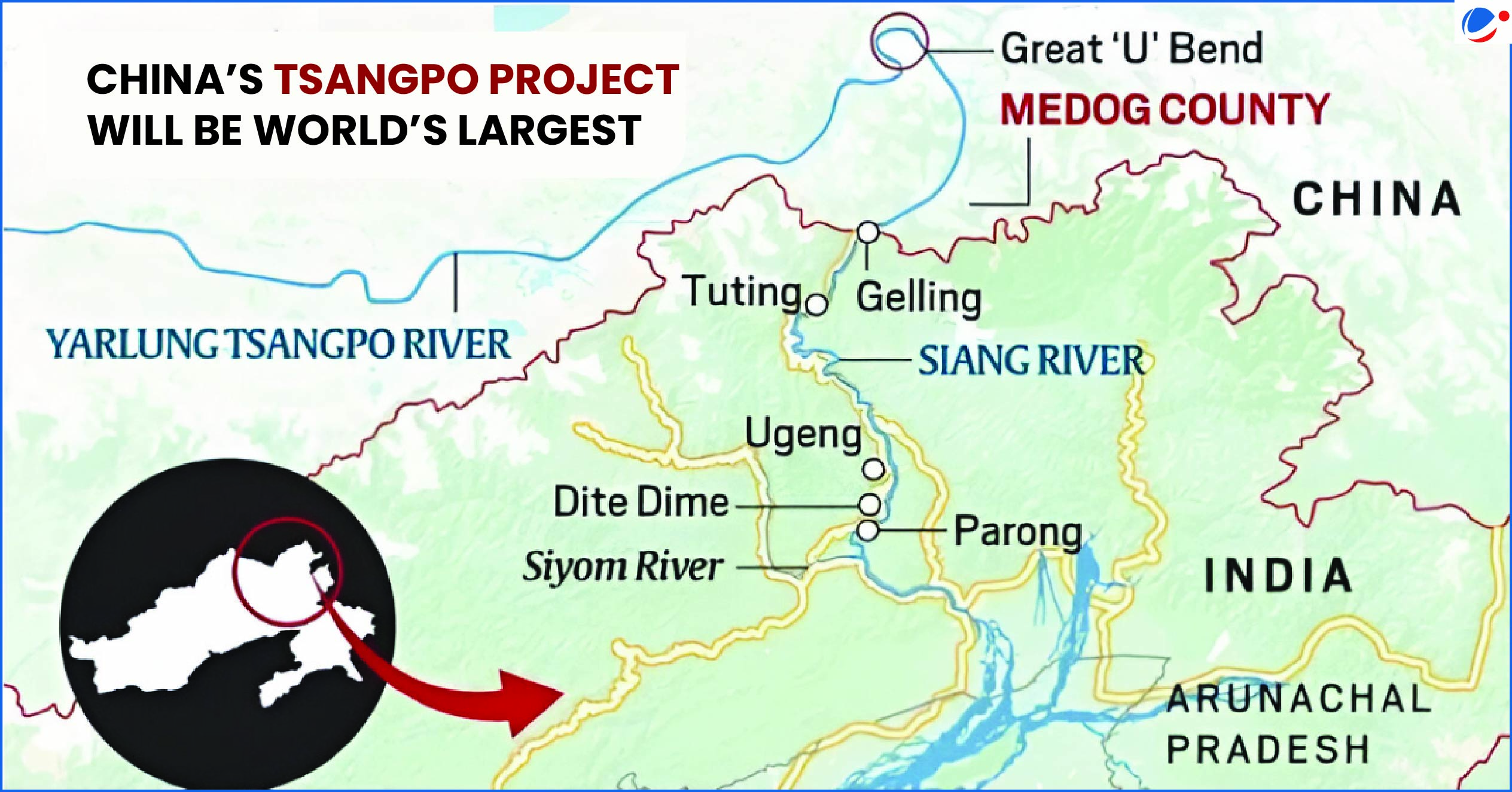The dam is being built across a huge gorge in the Himalayas where the river makes a U-turn near India’s border (Arunachal Pradesh).
- Once completed, it can surpass the scale of China's Three Gorges Dam on the Yangtze River.
- Brahmaputra flows across the Tibetan Plateau, carving out the deepest canyon on Earth.

Key Concerns associated with the Dam
- Disaster Risk: This increases the threats related to earthquakes. Tibetan plateau frequently experiences earthquakes as it is located over the tectonic plates.
- E.g., 1950 Assam-Tibet Earthquake
- Environmental Challenges: It may cause disruption to local ecology and downstream water flow.
- It will affect biodiversity and agriculture.
- Geopolitical challenges: China can potentially weaponize (as a ‘water bomb’) dam during conflicts by causing floods.
- Cultural challenges: E.g., Project threatens tribes like the Adi Tribe in Siang valley in Arunachal Pradesh.
China and India have established Expert Level Mechanism (ELM) in 2006 to address trans-border river issues by sharing hydrological data on Brahmaputra and Sutlej rivers during flood seasons. India is also building its hydropower dam on the Brahmaputra in Arunachal Pradesh.
- Both countries are not signatories to the United Nations Convention on the Law of the Non-Navigational Uses of International Watercourses, 1997.






